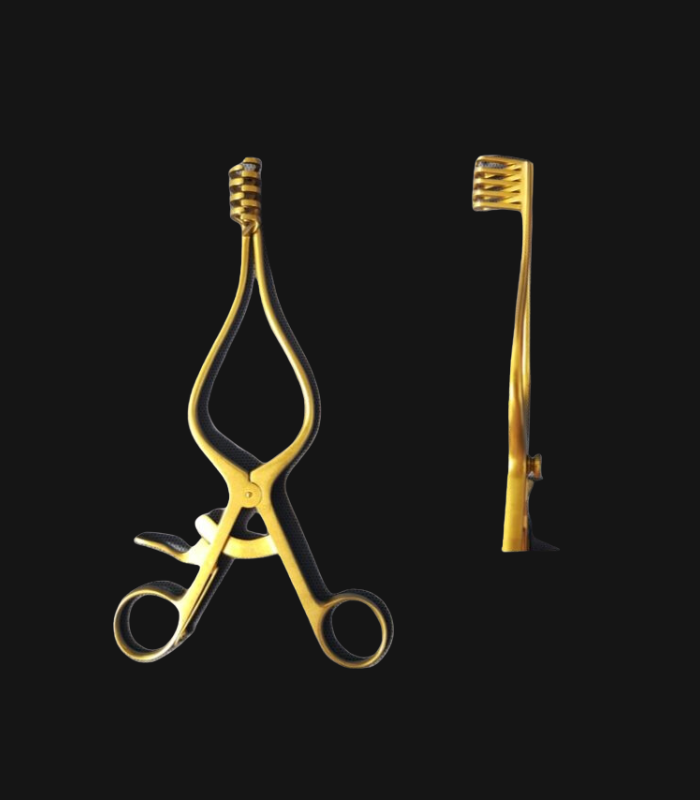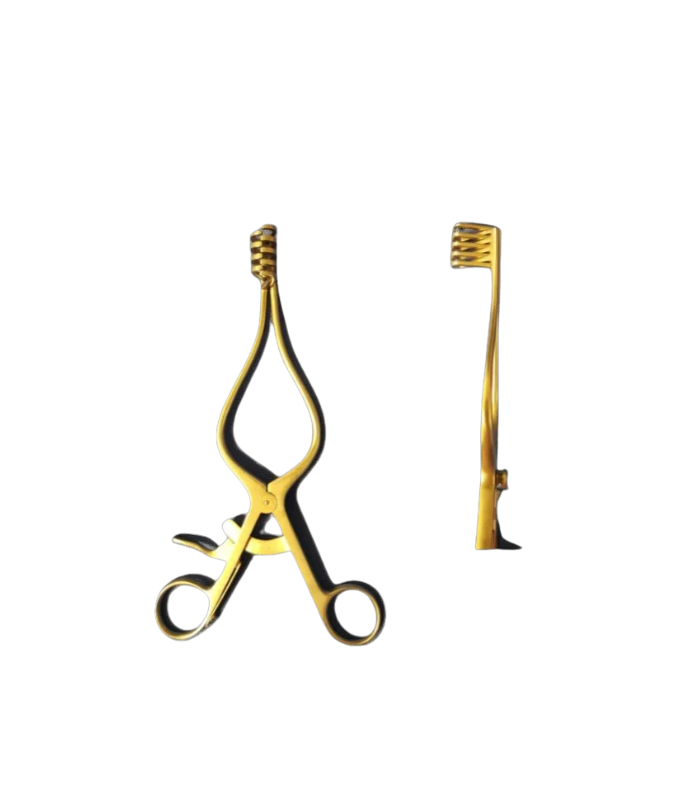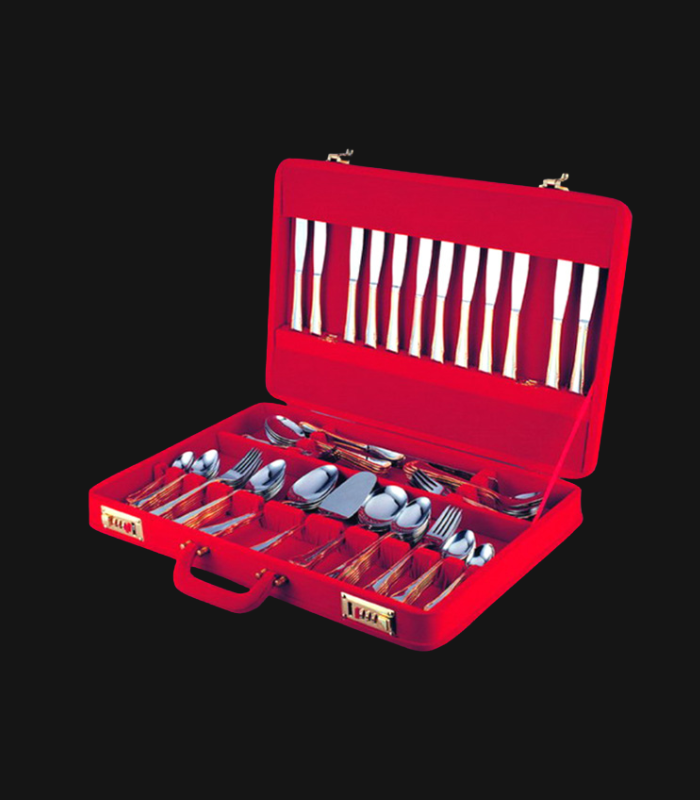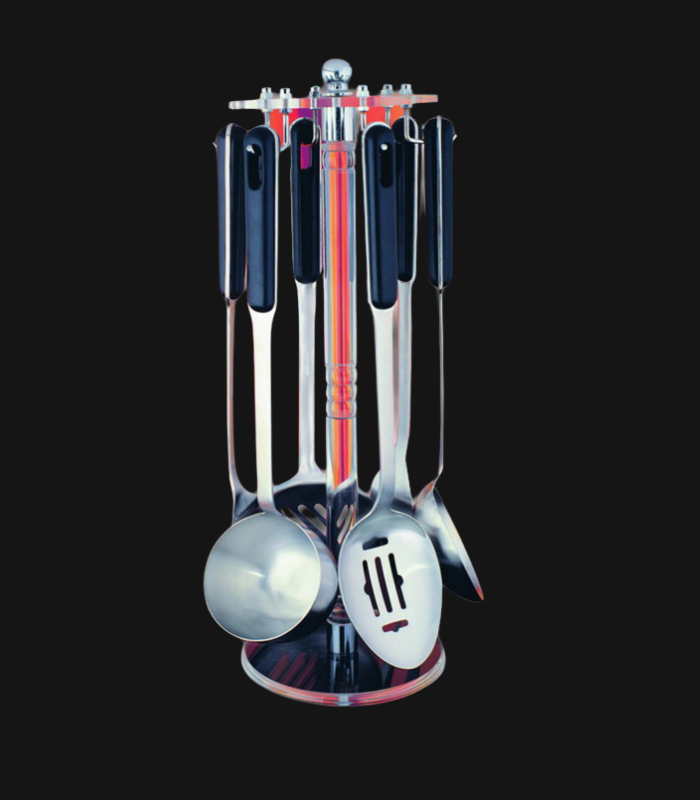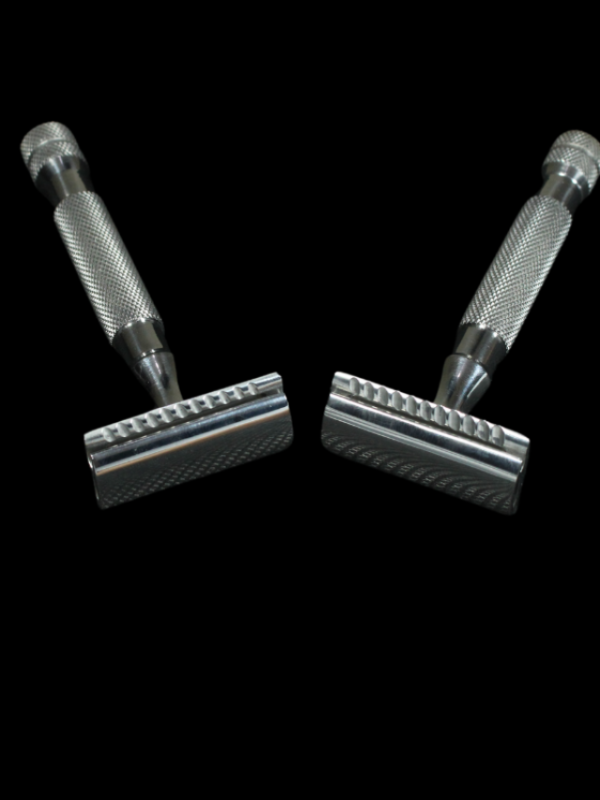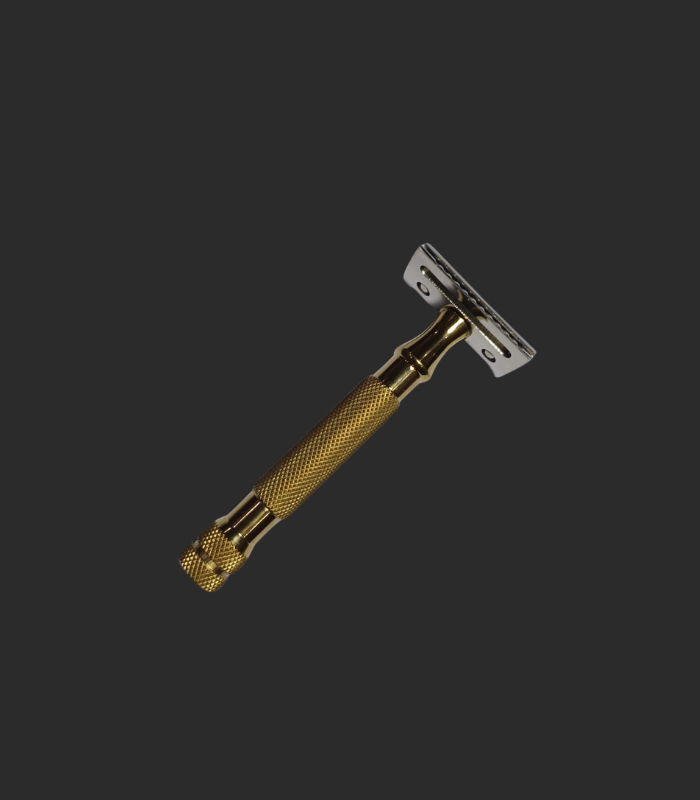Introduction to Safety Razorshttps://sirecksenterprises.com/product/safety-razors-at-sirecks-enterprises/
Shaving journey is a daily ritual for many individuals, and it has evolved significantly over the years. One popular method gaining traction is the use of safety razors. Unlike disposable razors, safety razors are designed to provide a closer and more controlled shave. Their construction features a fixed blade that is safely enclosed within a protective guard, minimizing the risk of nicks and cuts on the skin.
The fundamental difference between safety razors and their disposable counterparts lies in sustainability and longevity. Disposable razors are often used briefly before being discarded, contributing to significant environmental waste. In contrast, safety razors are primarily made of durable materials, such as metal, and can last for many years with proper care. Only the blades need to be replaced periodically, typically every few weeks, which is both economically and environmentally beneficial.
Another key advantage of using a safety razor is the cost-effectiveness over time. Although the initial investment might be higher than purchasing a pack of disposable razors, safety razors eliminate the need for frequent repurchases of entire razor units. Users can buy blades in bulk at a fraction of the ongoing cost and enjoy the superior performance of these razors.
Furthermore, beginners often find that safety razors yield a superior shaving experience. The blade exposure allows for a close shave, reducing the likelihood of irritation and providing a smoother finish. Users appreciate the more controlled and intentional approach that safety razors encourage, transforming the often mundane task of shaving into a mindful ritual. Overall, safety razors present a unique blend of cost-effectiveness, environmental advantage, and an elevated shaving experience that appeals to many who seek a better grooming solution.
Choosing the Right Safety Razor
Selecting the appropriate safety razor is crucial for an enjoyable shaving experience, and various factors should be taken into consideration to find one that best suits your needs. Safety razors come in different types, primarily categorized into open comb and closed comb designs. Open comb safety razors are typically preferred by experienced users, as they provide a more aggressive shave by allowing closer access to the skin. Closed comb options, on the other hand, offer a milder shave, making them an ideal choice for beginners or those with sensitive skin.
Another important aspect to consider is the blade compatibility and variations. Safety razors typically use double-edged blades that can vary in sharpness and material. Some users may prefer stainless steel blades for their durability, while others may opt for carbon steel blades for a smoother shave. It is advisable to try different brands to find the blade that works best with your safety razor, as this can greatly influence your shaving experience.
Special features such as a twist-to-open design and precise blade alignment can also impact your choice. A twist-to-open safety razor allows for quick and easy blade changes, which can be particularly beneficial for those new to wet shaving. Additionally, proper blade alignment is essential for safety and effectiveness; hence, selecting a razor known for its precise alignment can enhance both comfort and efficiency during shaving.
The safety razors available at sirecksenterprises.com are designed with these considerations in mind, offering a variety of options to cater to different preferences. With the right safety razor in hand, one can embark on a journey towards achieving a close, comfortable shave while enjoying the unique ritual that wet shaving provides.
Understanding the Components of a Safety Razor
A safety razor is a classic shaving tool that consists of several key components working together to provide an efficient and comfortable shaving experience. Understanding these components is essential for both new and experienced users to appreciate the functionality and benefits of this shaving method.
The primary parts of a safety razor include the handle, the head, and the blade. The handle is typically ergonomic, allowing for a firm grip during shaving. It can vary in length and design, catering to different user preferences and techniques. A well-designed handle not only ensures comfort but also contributes to overall control while shaving, reducing the risk of nicks and cuts.
The head of the safety razor is where the blade is housed and is integral to achieving a close shave. Depending on the type of safety razor—open comb or closed comb—the head design will differ, offering various levels of aggression. The open comb design is ideal for those who prefer a more aggressive approach, while the closed comb offers a gentler shave, making it suitable for sensitive skin. Understanding how the head type interacts with the blade can enhance the user’s shaving experience.
Finally, blades are interchangeable and come in various brands and types. High-quality blades can be sourced from reputable manufacturers, and it is advisable to experiment to find the best fit for one’s skin type and shaving style.
Using a safety razor constructed from quality materials such as stainless steel not only enhances durability but also ensures that the product is 100% plastic-free. This aspect aligns with the growing trend towards eco-friendly practices in personal grooming. A safety razor, with its robust construction and replaceable blades, represents a sustainable choice for those mindful of environmental impact while aiming for an effective shaving routine.
Preparing for Your First Shave
Embarking on your shaving journey with a safety razor can be a rewarding experience, but preparation is key to ensuring a smooth and enjoyable shave. The first step in this preparation is developing a suitable skincare routine. It is vital to cleanse your face with a gentle cleanser that suits your skin type. This will help remove dirt and oil, creating a clean canvas for the shaving process. Following this, exfoliating your skin a few times a week can prevent ingrown hairs and enhance overall skin health.
Another important aspect of preparing for your first shave is selecting the right shaving cream or soap. Opt for products designed for safety razors, as they provide the lubrication necessary to allow the razor to glide smoothly across your skin. A quality shaving cream can help soften hair and moisturize the skin. Look for creams with natural ingredients that cater to your skin’s specific needs, such as those designed for sensitive skin, which can minimize irritation during the shave.
Setting up a comfortable shaving environment is also crucial for enhancing your experience. Ensure your shaving area is well-lit and free from interruptions. Gather all essential tools, including your safety razor, brush, cream, and a bowl if you prefer lathering your cream. Investing in a good quality brush can significantly improve your lathering technique, promoting a richer, more effective application of the shaving cream. Consider using a warm towel to pre-soften the hair and skin before applying the cream. This practice can lead to a much smoother shave.
Lastly, take your time to learn the proper techniques for using a safety razor. Practice will enhance your skill and comfort level, allowing for an improved shaving experience. By prioritizing skincare, selecting the right products, and creating a comfortable environment, you are well on your way to a successful first shave with a safety razor.
How to Properly Load a Blade into a Safety Razor
Loading a blade into a safety razor may seem straightforward, yet it requires careful attention to detail to ensure an optimal shaving experience. A well-aligned blade is crucial for achieving the closest shave without irritation. Begin by gathering your materials: a safety razor, a fresh razor blade, and a clean, flat surface to work on for safety. Make sure your hands are dry to avoid slipping during the process.
Start by disassembling the safety razor. This often involves unscrewing the handle from the head of the razor. Some safety razors feature a two- or three-piece construction, so follow the specific disassembly method applicable to your model. Once the head is separated, place it face-up on your clean surface. This orientation will help minimize the risk of cutting yourself while handling the blade.
Next, carefully unwrap the new razor blade, taking particular care to avoid touching the sharp edges. Most blades come with a paper or plastic sleeve that covers the cutting edges. Grasp the blade by its edges and gently place it into the razor head, ensuring that it is properly seated. Pay attention to the blade alignment; the edges should line up symmetrically with the safety bar of the razor. Misalignment can lead to uneven cuts or nicks during shaving.
Once the blade is in place, reassemble the razor by securing the head back onto the handle. While reattaching, double-check that the blade remains aligned and properly seated. After the assembly is complete, visually inspect the razor to ensure everything is in order. Finally, always remember to handle blades with care and dispose of any used blades responsibly, following appropriate safety protocols. Maintaining a methodical approach when loading a blade into a safety razor will significantly enhance your shaving efficiency and effectiveness.
Shaving Techniques for Beginners
Entering the world of shaving with a safety razor can be both exciting and intimidating. To help beginners navigate this process effectively, understanding the essential shaving techniques is crucial. First and foremost, the direction of strokes plays a significant role in achieving a smooth shave. Traditionally, it is advised to shave with the grain, meaning in the direction of hair growth, to minimize irritation and ensure a closer cut.
The angle of the razor blade is another important factor. It is recommended to maintain a 30-degree angle between the blade and your skin. This positioning allows the razor to efficiently cut through hair while reducing the risk of nicks. Beginners often struggle with how much pressure to apply; it is essential to remember that a safety razor is designed to do most of the work. Applying gentle pressure, rather than forcing the blade against the skin, will yield better results and improve overall comfort.
When maneuvering around sensitive areas, such as the neck and jawline, beginners should take extra care. One effective method is to stretch the skin slightly with a free hand while shaving, which can create a smoother surface and lead to better results. Additionally, using shorter strokes in these areas can help avoid irritation and cuts.
Despite careful techniques, beginners may encounter common issues such as nicks and cuts. In the event of a minor cut, applying a styptic pencil or an alum block can help to quickly stop bleeding and soothe the skin. Additionally, following up with a quality aftershave balm can provide hydration and further protect sensitive skin.
Overall, mastering the techniques of shaving with a safety razor involves practice and patience. With time, beginners will develop their own rhythm and style, leading to a more efficient and effective shaving routine.
Aftercare: Maintaining Your Skin Post-Shave
After completing your shaving routine with a safety razor, it is crucial to implement an effective aftercare regimen to help soothe and protect the skin. Proper aftercare not only minimizes the risk of irritation but also promotes healthy skin, allowing for a comfortable, smooth finish. Selecting suitable products to use post-shave plays a pivotal role in this process.
One of the essential products to consider is a high-quality aftershave balm. These balms are designed to hydrate and nourish the skin after shaving. Look for balms that contain natural ingredients such as aloe vera, witch hazel, or chamomile, as these can provide calming effects and help to reduce redness and irritation. Additionally, an aftershave lotion with nourishing oils, like jojoba or argan oil, may further enhance skin moisture and elasticity.
Beyond aftershave, it is critical to adopt a consistent moisturizing routine. Utilizing a fragrance-free moisturizer daily can assist in maintaining the skin’s barrier, which may become compromised during shaving. This moisturizer should be applied after the aftershave has settled into the skin, ensuring deeper absorption and prolonged hydration.
To prevent potential shaving-related irritations, consider implementing a few additional practices. First, allow your skin to rest for at least a few hours post-shave before applying any makeup or additional products that could clog pores. Moreover, avoiding hot water or harsh exfoliants immediately following a shave is advisable, as these can exacerbate any rawness experienced. Lastly, try to avoid shaving too often; give your skin ample time to recuperate between shaves to maintain its overall health and resilience.
By incorporating these aftercare tips and selecting the right products, you can ensure your skin remains healthy, hydrated, and irritation-free, making your shaving experience with a safety razor not only enjoyable but also beneficial in the long run.
Caring for Your Safety Razor
Proper care and maintenance of your safety razor are essential to ensure its longevity and optimal performance. By following a few straightforward practices, you can keep your razor in excellent condition while enhancing your shaving experience.
Firstly, cleaning your safety razor after each use is vital. Residue from shaving cream and hair can build up if not removed promptly. Start by rinsing the razor under warm water to dislodge any debris. For a deeper clean, disassemble the razor into its components—handle, head, and blade. Use a soft toothbrush or cloth to gently scrub each part, especially the comb, where hair particles can accumulate. Avoid harsh chemicals that can damage the metal finish; instead, opt for mild soap or vinegar diluted with water.
Storing your safety razor properly is crucial to maintain its condition. After cleaning, ensure that all components are dried thoroughly, as moisture can lead to rust and corrosion. Store the razor in a dry place, preferably in a protective stand or case. If your safety razor comes with a cover, use it when the razor is not in use to prevent accidental damage and dust accumulation.
Regular inspection of your safety razor is equally important. Check the blade for signs of wear, typically after every five to ten shaves, and replace it when necessary to ensure a smooth shave and to prevent any skin irritation. Additionally, inspect the handle and head for any signs of loosening or corrosion. Addressing minor issues early can prevent more significant problems down the line.
Incorporating these care practices will significantly enhance the performance and lifespan of your safety razor, making your shaving journey more enjoyable and effective.
Conclusion: Embracing the Safety Razor Lifestyle
As we have explored throughout this guide, transitioning to a safety razor represents not just a change in grooming tools but a shift in approach to personal care. Embracing the safety razor lifestyle brings with it numerous benefits, including environmental sustainability, cost-effectiveness, and the potential for a closer, more satisfying shave. Adopting this method requires a mindset of patience and practice, as mastery of the safety razor does not happen overnight.
Starting with the right tools is essential. A quality safety razor, sharp blades, and proper prep such as using shaving cream or soap can dramatically improve your experience. Learning the correct angle and technique for shaving is vital for optimal results, and it is normal to have a learning curve when first beginning. Remember, taking your time and developing a methodical approach will lead to improvements in your skill set, allowing you to enjoy the shaving process rather than treating it as a chore.
The safety razor also encourages mindfulness during your grooming routine. Instead of rushing through a daily task, it invites you to focus on the experience, pay attention to your skin’s needs, and appreciate the craftsmanship of a finely made tool. This aspect of self-care can enhance your daily ritual, making it not just practical but also genuinely enjoyable.
In conclusion, as you embark on this shaving journey, embrace the philosophy of the safety razor lifestyle. With diligent practice and a deeper understanding of your needs, you will soon find that not only is shaving more efficient, but it can also become an integral part of your self-care routine, offering both satisfaction and quality over quantity in your grooming endeavors.








